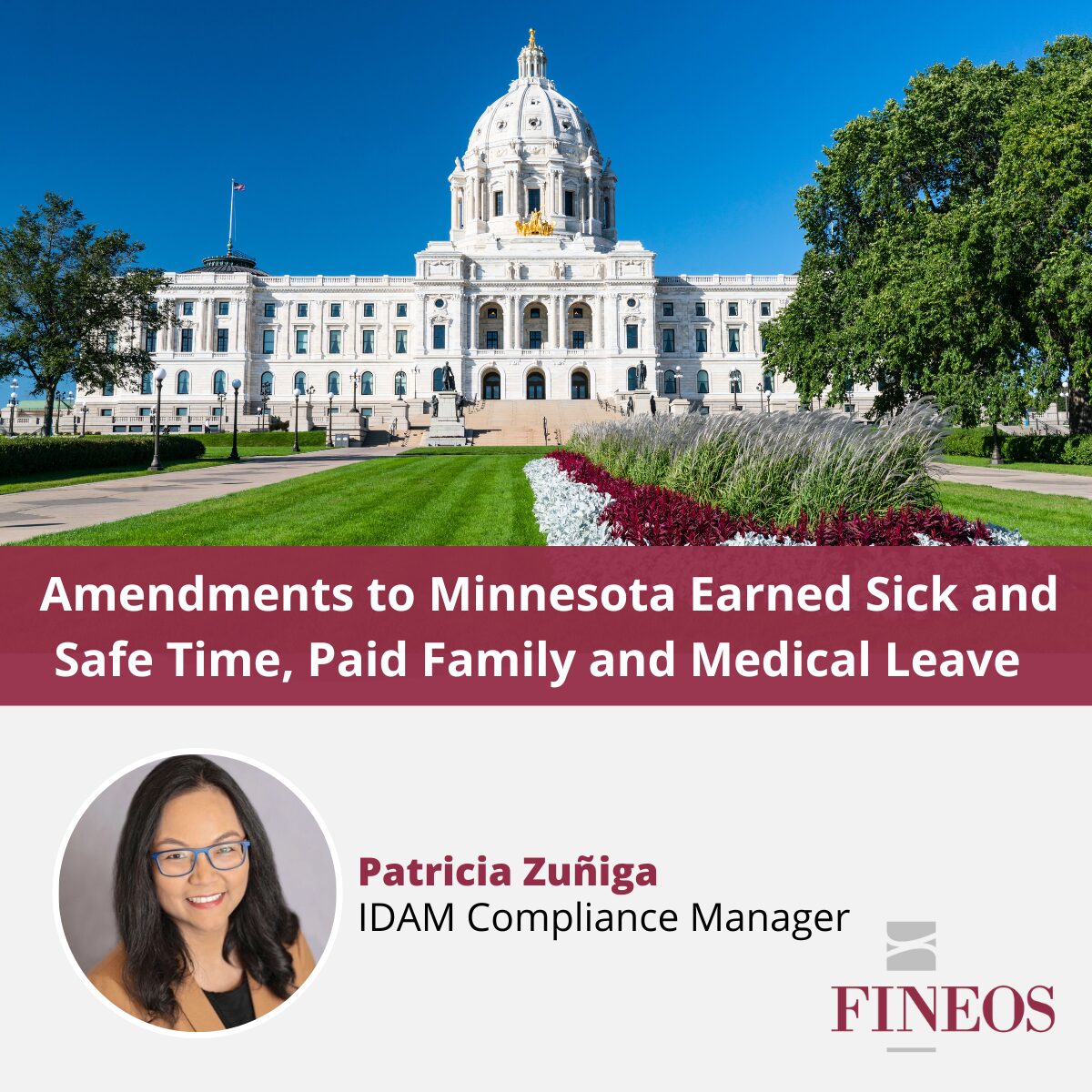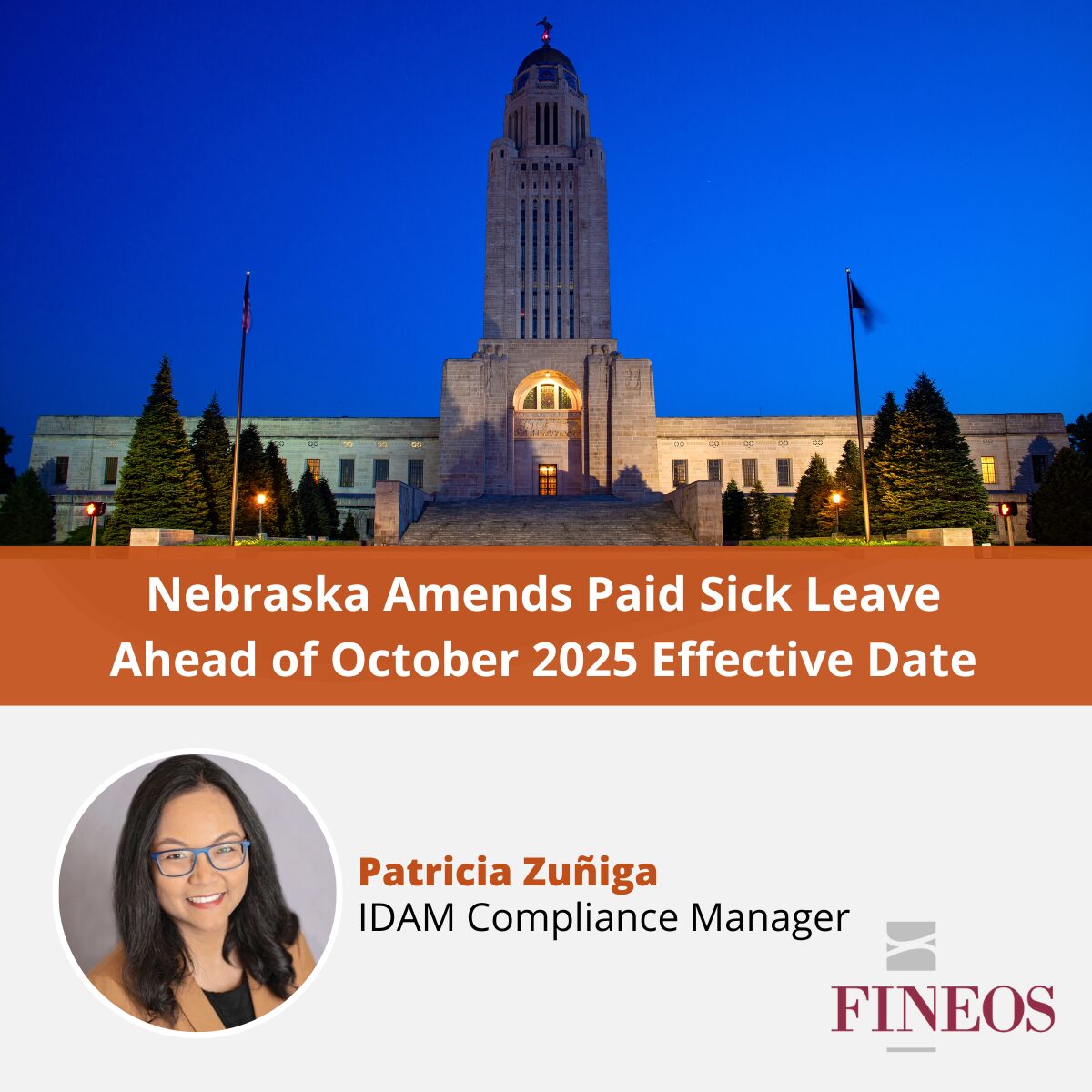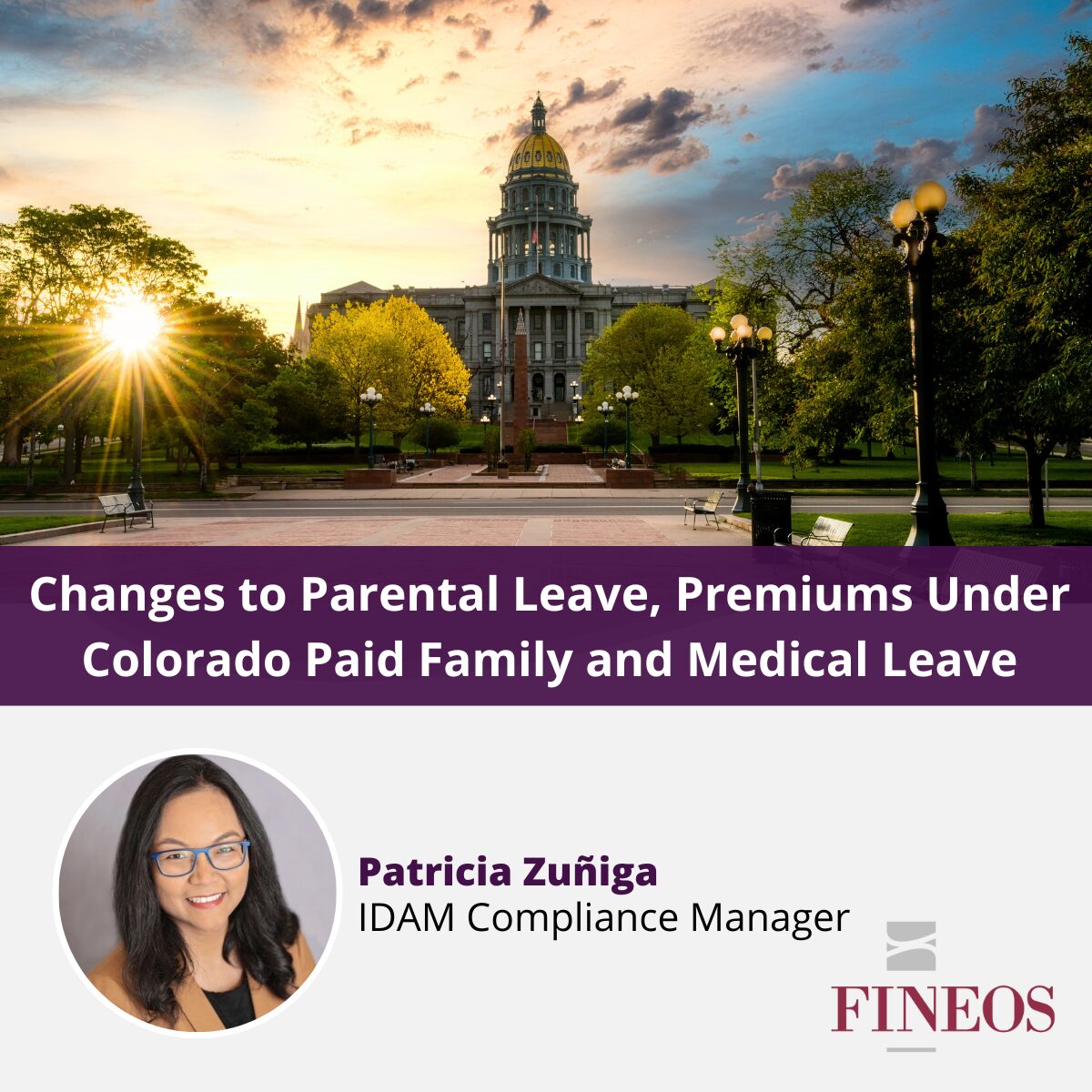In order to adapt to changes in leave legislation in real time, insurance carriers need agile absence management software. In this blog, you’ll learn about paid family and medical leave program law changes across the country.
Expansion of California Family Rights Act
On September 28, California Governor Newsom signed into law Assembly Bill 1033, expanding the state’s unpaid family and medical leave law, the California Family Rights Act (CFRA). This amendment to CFRA added “parent-in-law” to the definition of a parent as a covered family member under the CFRA. The law goes into effect January 1, 2022.
New Year, New Rates
New York, Massachusetts, and Washington have announced new Average Weekly Wage figures, which will drive rate changes and maximums for their Paid Family Leave programs:
| State | New State Average Weekly Wage | New Weekly Benefit Maximum (2021 max. in parenthesis) |
| New York | $1594.57 | $1,068.36 ($971.61) |
| Washington State | $1475.00 | $1327.00 ($1206) |
| Massachusetts | $1694.24 | $1,084.31 ($850) |
Connecticut Guidance on Family & Medical Leave Year Calculations
The Connecticut Department of Labor has issued guidance concerning the transitions to the new CT FMLA law on January 1, 2022. We have written before about the changes to the CT FMLA that accompanied the passage of the CT PFML program. The guidance concerns the transition under the CT FMLA from an entitlement of 16 weeks of leave in a 24-month period to 12 weeks of leave in a 12-month period. Some key takeaways:
- An employee that starts CTFMLA leave prior to January 2022 is capped at 12 weeks in the applicable 12-month period as of January 1, 2022, even the employee was approved for, and began, 16 weeks of CTFMLA leave in 2021
- The following calculations apply to leave taken in 2022 to view an employee’s remaining available time:
- Rolling back – 12-month period measured backward from the date an employee uses any CTFMLA leave. Under the ‘‘rolling’’ 12-month period, each time an employee takes CTFMLA leave, the remaining leave entitlement would be the balance of the 12 weeks which has not been used during the immediately preceding 12 months.
- Rolling forward – 12-month period measured forward from the first date an employee takes CTFMLA leave. The next 12-month period would begin the first time CT FMLA leave is taken after completion of the prior 12-month period.
- Calendar year – 12-month period that runs from January 1 through December 31.
- Any fixed 12-month period – 12-month period such as a fiscal year (for example, October 1 through September 30) or a year starting on an employee’s anniversary date.
Expansion of DC Paid Family Leave and DC FMLA
On August 23, the Mayor of the District of Columbia (D.C.) signed the Fiscal Year 2022 Budget Support Emergency Act of 2021 (the “Emergency Act”). The Emergency Act contains changes to the D.C. Family and Medical Leave Act (D.C. FMLA) and the D.C. Paid Family Leave programs (entitled the Universal Paid Leave Act, referred to as the D.C. Paid Family Leave, D.C. PFL). Enacted in 2016, the D.C. PFL program provides District-administered paid leave benefits to D.C. employees while on leave to bond with a new child, to care for a family member with a serious health condition, or to care for the employee’s own serious health condition. The changes to the law contained in the Emergency Act went into effect immediately upon the Mayor’s signature on August 23. Because it was passed as an emergency act, it remains in effect for 90 days, until November 21. On September 27, the Mayor signed Fiscal Year 2022 Budget Support Act of 2021, a bill which makes the Emergency Act permanent. Per DC’s legislative process, this bill has been transmitted to Congress and is projected to be law on December 2. Some of the key changes to the existing law are as follows:
Definition of Average Weekly Wage: The definition of “Average Weekly Wage” (AWW) for claims filed after October 1, 2021, and before the 365th day after the end of the Public Health Emergency (defined as the COVID-19 public health emergency declared pursuant to Mayor’s Order 2020-046) was changed and is now defined as the total wages subject to contribution for the four quarters that the employee’s wages were the highest out of the 10 quarters immediately preceding the qualifying leave event, divided by 52. For claims outside this time frame, the calculation remains as it was previously. Since the AWW is an element of the financial eligibility test and benefit calculation, the new AWW impacts those calculations.
Delayed Application Due to Exigent Circumstances: An employee is required to submit a claim within 30 calendar days after a qualifying leave event, but the 30-calendar day limitation can be waived if the employee is unable to apply for the paid-leave benefits in that time frame due to exigent circumstances.
Addition of Leave Reasons: The amendment:
- clarifies that miscarriage and stillbirth are covered as a qualifying medical leave event
- introduces a definition of “pre-natal medical care”
- adds new entitlement for pre-natal medical care, discussed below
Elimination of Waiting Period: For claims filed after October 1, 2021 and before the 365th day after the end of the Covid-19 Public Health Emergency, the existing one-week waiting period for benefit payments is eliminated.
Duration of Leave
Current Entitlement: Prior to the change, the entitlement for leave under the DC PFL program was:
- 8 workweeks of qualifying parental leave
- 6 workweeks of qualifying family leave
- 2 workweeks of qualifying medical leave
Oct 1, 2021 through Oct 1 2022: Qualifying medical leave is increased from two to six weeks, and two weeks of pre-natal leave is added:
- 8 workweeks of qualifying parental leave
- 6 workweeks of qualifying family leave
- 6 workweeks of qualifying medical leave
- 2 workweeks of pre-natal leave
March 1, 2022: After March 1, 2022, there can be a step-up increase in benefits, dependent on certain data. If fully implemented, the benefits would reach (subject to combined maximums):
- 12 workweeks of qualifying parental leave
- 12 workweeks of qualifying family leave
- 12 workweeks of qualifying medical leave
- 2 workweeks of pre-natal leave
Overall Maximums
- The maximum combination of qualifying leave benefits an employee can receive within a 52-workweek period is the amount of the parental leave entitlement.
- This amount can be exceeded if an employee takes pre-natal leave, if the employee’s pre-natal leave benefits and medical leave benefits together do not exceed the overall medical leave benefits limit (two weeks currently, and six weeks from October 1 through October 1, 2022).
The amendment clarifies that intermittent leave is permitted.
DC Family and Medical Leave Act
The Emergency Act changed the determination of an eligible employee under the District of Columbia’s unpaid job-protected leave program, the D.C. Family and Medical Leave Act, as follows:
| Pre-Amendment Requirement | Amended Requirement | |
| Length of Service | Employee must have been employed by the same employer for one year without a break except for regular holiday, sick, or personal leave granted by the employee | Employee have been employed by the same employer for at least 12 consecutive or non-consecutive months in the 7 years immediately preceding the date on which the period of family or medical leave is to commence |
| Hours of Service | 1000 hours during the 12-month period immediately preceding the family or medical leave | No change |
Allegheny County Paid Sick Leave
Allegheny County, Pennsylvania enacted legislation requiring employers with 26 or more employees to provide paid sick leave to its workforce. Employees are entitled to one hour of paid sick leave for every 35 hours worked, capped at 40 hours per year. The ordinance, effective December 14. contains the following provisions:
Covered Employers: Employers with 26 or more employees are covered.
Eligible employees: Employees are eligible to take leave after 90 calendar days of employment. Independent contractors, state and federal workers, and seasonal employees are not eligible under the law.
Permitted Leave Reasons: Employees can use sick time for:
- An employee’s health needs, including preventive medical care;
- A family member’s needs, including preventive medical care;
- Closure of the employee’s place of business due to a public health emergency;
- Employee’s need to care for a child whose school or place of care has been closed by a public official due to a public health emergency; or
- Care for a family member when the family member’s presence in the community jeopardizes the health of others due to exposure to a communicable disease.
Amount of Leave: Employees accrue at least one hour of paid sick leave for every 35 hours worked, capped at 40 hours per year. An employer can forgo the accrual method by providing employees with the full 40 hours each January 1. An employee who frontloads time each year does not have to permit carryover of time from year to year.
Certification: For paid sick time that lasts 3 or more days, an employer may require the employee to present reasonable documentation that the paid sick time has been used for an allowable purpose covered and protected by the terms of this Article.
Employee Notice: Employees must provide a request to take leave, which should include the anticipated duration of the absence.
Employer Notice: Employers must provide employees with written notice of their rights under the new law.
What is FINEOS doing to prepare?
FINEOS is ready to administer these amendments to help our clients remain in compliance. Using modern insurance technology solutions like the FINEOS Platform can help insurance carriers remain agile and competitive when leave legislation is revised. Learn more about how a modern, integrated disability and absence management solution can help your organization adapt to sudden changes and remain in compliance here.


